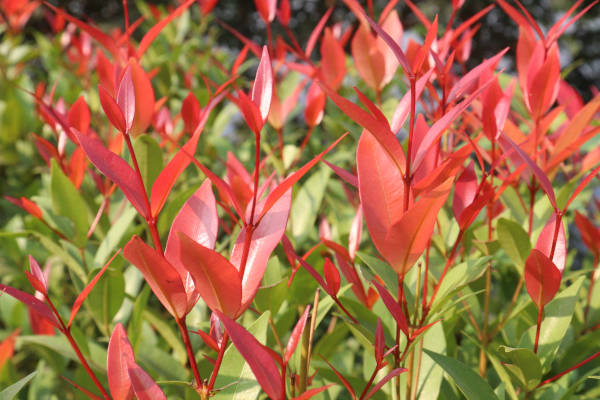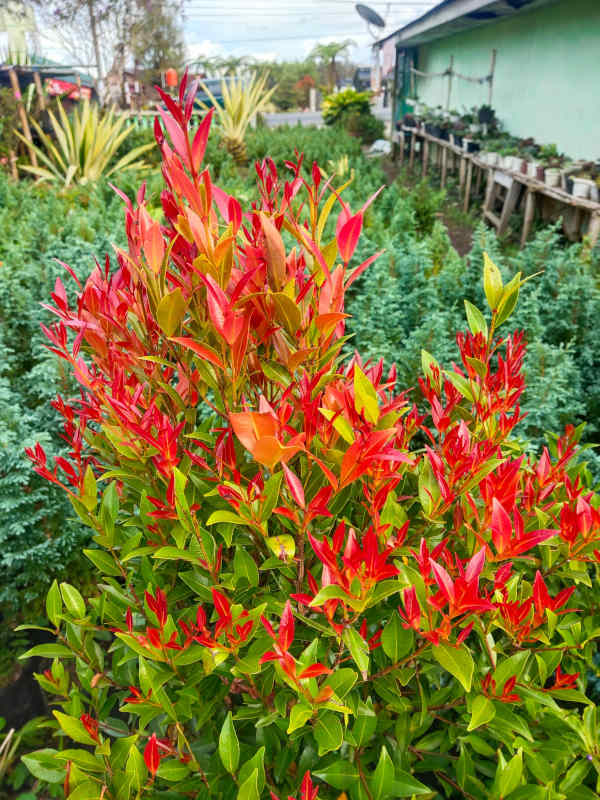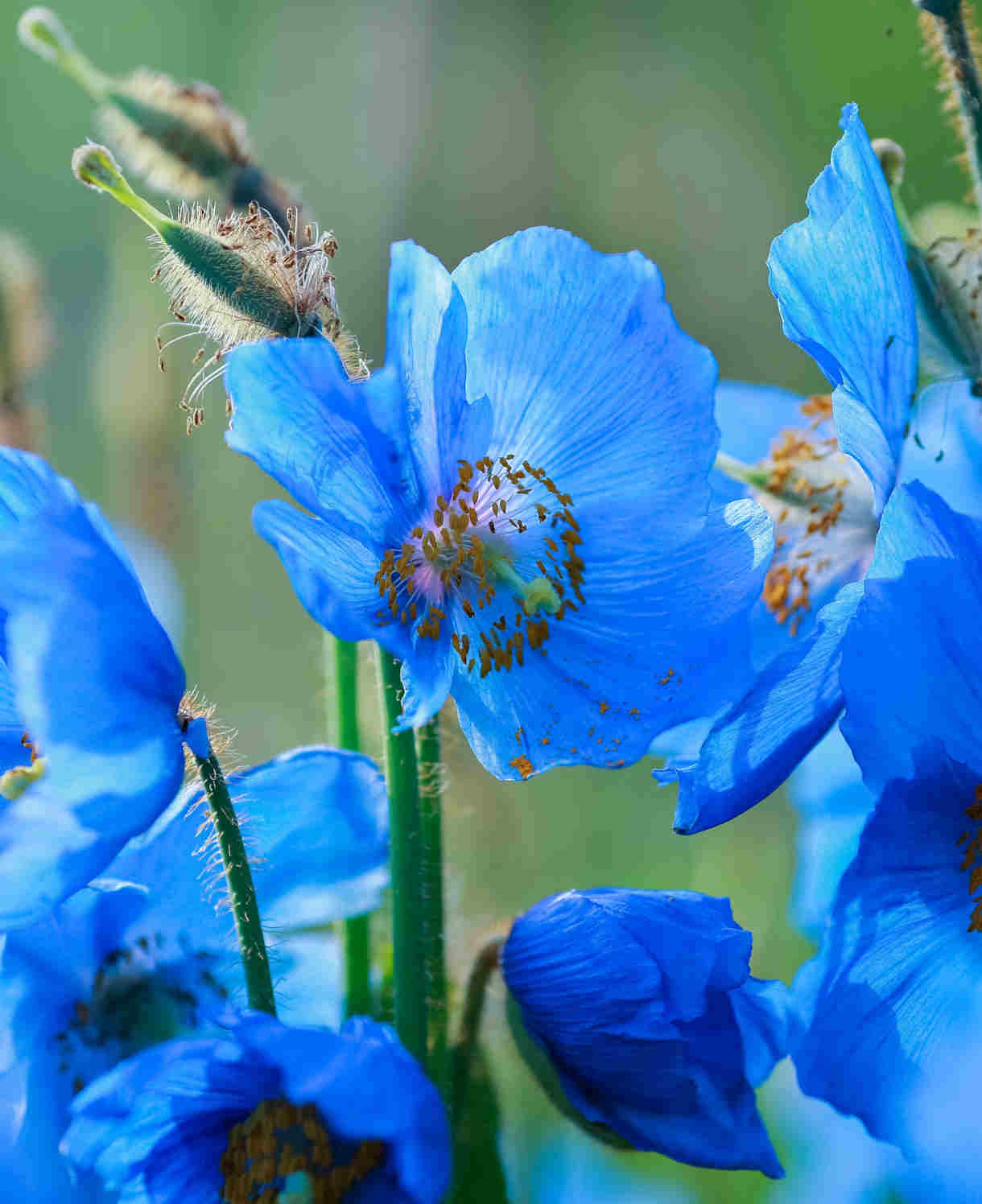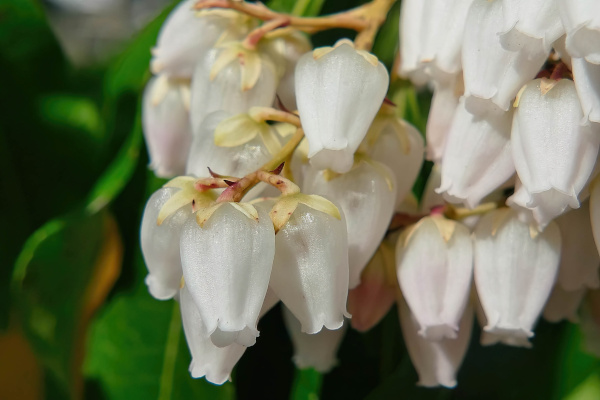How to grow Leucothoe
This member of the heather family contains 50 species of deciduous, semi-evergreen, and evergreen shrubs found growing in woodland, thickets, and swamps throughout the world. This growing guide will focus on the growing requirements of the most commonly cultivated species, Leucothoe fontanesiana.
Also known as switch ivy or dog hobble, this small, thicket-forming evergreen shrub is valued for its long, glossy, lance-shaped foliage which can often change colour throughout the course of a year. In spring, its branches erupt in pendulous racemes of small, white, pieris-like flowers.
Leucothoe fontanesiana is a tough, resilient shrub – its undemanding nature and tolerance for deep shade making it a popular choice both in municipal planting and ornamental gardens.

Zantedeschia is a genus of flowering plants from the family Araceae and is native to southern Africa. With a rich history dating back to the Ancient Romans, these deciduous or semi-evergreen perennials have been used as a symbol of celebration. Zantedeschia was Named after Professor Giovanni Zantedeschia, an Italian botanist.
There are two main forms of Zantedeschia: hardy and tender. Hardy forms of the plant can be grown outdoors, enjoy moist soil and full sun or partially shaded conditions - these are known as Arum lilies. Tender forms of Zantedeschia prefer being grown in containers or pots and should be brought inside over the winter - these are known as Calla lilies.
With tuberous flora in all colours from whites, yellows and oranges to deep reds and purples, Zantedeschias are not to be overlooked in any garden, as long as they have sufficient sunlight to grow in.
Ready to learn more about growing Zantedeschia? Read on for all there is to know...

Key Information
Soil pH
Position
Hardiness


Where & when to plant Leucothoe
Position- Deep or partial shade
Soil- Reliably moist and acidic
Flowering Period- Spring
Hardiness- Hardy
For best results, plant in autumn or spring. An autumn planting can be done by those gardening in mild conditions (and broadly speaking, this is the southern half of the UK). For those liable to very cold winters, it is best to wait until spring (generally the northern half of the UK). Planting can also be carried out in summer, though be prepared to water regularly.
Leucothoe is suitable for an acidic woodland garden or shade border, where its dense, low, arching branches form highly effective groundcover. To allow fullest enjoyment of the spring flowers (which hang on the underside of branches), consider planting in an elevated position such as a bank or raised bed.
Leucothoe can also be grown in a large container filled with ericaceous compost (a good option for those with neutral to alkaline soil).
How to plant Leucothoe
In the ground
- Clear the chosen area of weeds.
- Dig a planting hole several times larger than the root ball.
- Place the plant in the hole, ensuring the top of the root ball sits level with the surface of the soil. Too low and the plant may rot, too high and the roots can dry out.
- Backfill with soil and firm in gently.
- Soak well with water.
- Mulch around the base with ericaceous compost or a pine bark mulch.
In a container
- Choose an appropriate container (the bigger the better), ensuring there are plenty of drainage holes.
- Use a good quality ericaceous potting compost with plenty of horticultural grit mixed in, and, if not already present in the compost (check the description on the bag) some slow-release ericaceous plant food.
- Start by partially filling the pot with compost; enough so that when placed on it the upper surface of the root ball is about 3cm lower than the top of the pot.
- Infill all the space surrounding the root ball with compost, firming down with your fingers then adding a little more so the plant is held tight.
- Pick up the pot (if you can!) and lightly tap on the potting bench or ground a few times to help further settle the compost around the plant.
- Soak well with water.
- A mulch with horticultural grit will look attractive and help to prevent a ‘cap’ or crust forming on the top of the compost (something container plants can suffer due to the artificial nature of their watering).

What to plant with Leucothoe
Gardens with acidic soil present an exciting opportunity to grow some of the most beautiful flowering shrubs there are. Try creating a multi-storey woodland with crinodendron, rhododendron, camellia, hydrangea, enkianthus and physocarpus as the top layer, and vaccinium (blueberry) and leucothoe as underplanting. Smaller, acid-loving plants at ground level complete the picture – think meconopsis, erythronium, and trillium, along with ferns such as blechnum and osmunda.



How to care for Leucothoe
Pruning and Deadheading
This wonderfully low-maintenance shrub requires little pruning, other than the removal of dead, diseased, damaged, and crossing branches in spring.
Watering
Water until established, and then in dry spells thereafter.
Container-grown leucothoe can be very thirsty and will require regular watering throughout the growing season. Allow the top few centimetres of compost to dry out between soakings.
Cold Protection
Leucothoe fontanesiana is reliably hardy and will withstand even the coldest of UK winters without the need for additional protection.
Pests and Diseases
Leucothoe tends to be trouble-free.
How to propagate Leucothoe
Leucothoe can be propagated by cuttings in summer.
- Find non-flowering shoots 5-10cm long and snip off the plant.
- Put them in a plastic bag straight away to prevent drying out.
- Fill a container with a compost mix which is at least 50% perlite (or if you prefer, as we do, 100% perlite).
- Remove the lowest third of leaves.
- Insert the cuttings into the compost and water lightly. Several cuttings can be put in the same container if there is enough space to do this without them touching.
- Place in a propagating unit with bottom heat if you have one, or covered with a plastic bag on a windowsill if not (out of direct sunlight).
- Keep the cuttings misted and occasionally watered until they root. You will know this has happened when roots emerge out of the bottom of the container.
- Gently remove rooted cuttings and pot them into individual pots. Grow on in an unheated conservatory or greenhouse they are big enough to be planted out.
Common Leucothoe questions
Can leucothoe grow in full shade?
Indeed, it can. This is one of the key attributes of this useful shrub.
How big does leucothoe get?
The eventual size can vary between species, though Leucanthoe fontanesiana tends to get no larger than 1.5m tall and 2m across. It has a low, spreading form.





